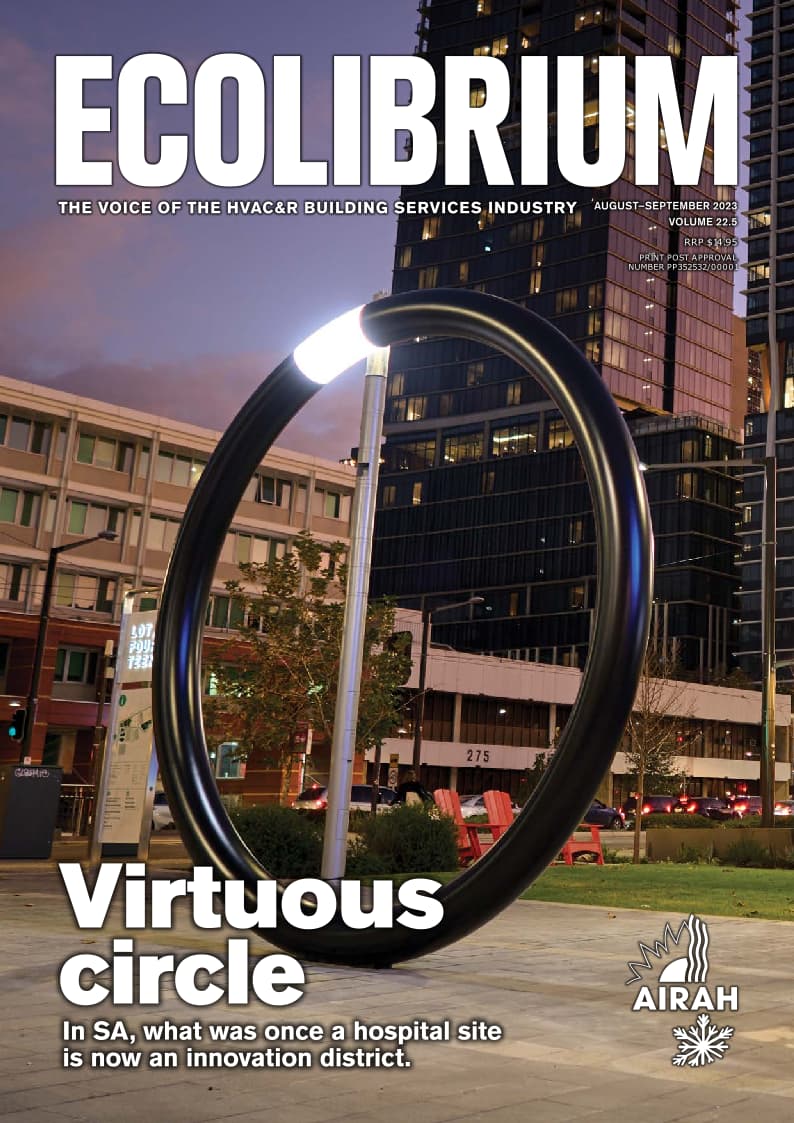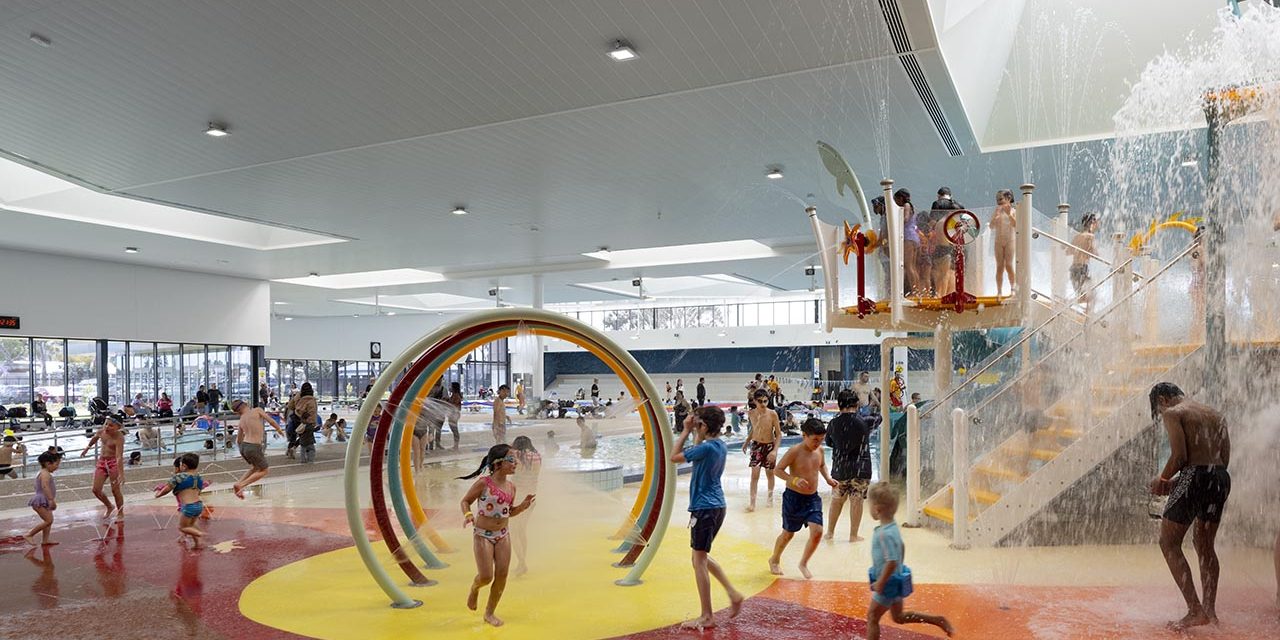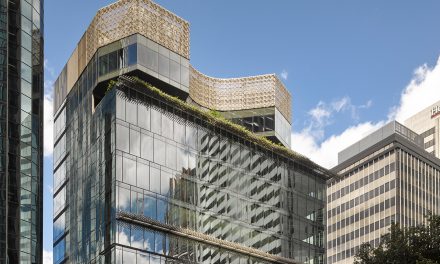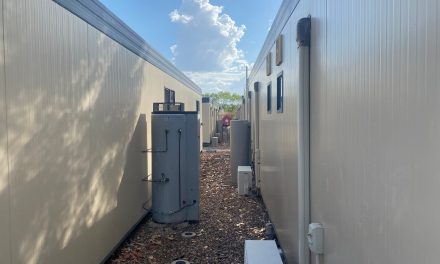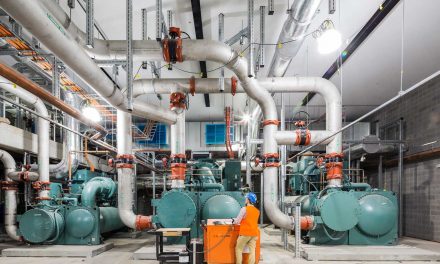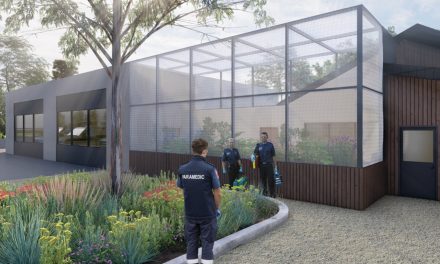A much–anticipated community facility in Melbourne’s north–west has done away with gas-fired boilers. Rather, new technologies have been adopted, making the Brimbank Aquatic and Wellness Centre Australia’s first all-electric aquatic centre powered by renewable energy. Ecolibrium explores this ground–breaking project.
Aquatic and leisure centres have traditionally been among the most energy- and emissions-intensive of local government-managed facilities, due in large part to their pool-heating requirements. This is especially the case for those facilities located in Australia’s southern states.
So, when Melbourne’s Brimbank City Council sought to redevelop its existing St Albans Leisure Centre, an opportunity was presented. Here was a chance to move away from fossil fuels, and to showcase the commercial viability of a renewable energy- powered aquatic centre. The idea was embraced.
“The Brimbank Climate Emergency Plan 2020–2025 commits Council to reaching net-zero emissions by 2030 for Council operations, and by 2040 for the Brimbank municipality as a whole,” says Brimbank City Council Mayor, Cr Bruce Lancashire.
“The plan also includes a commitment to assess the feasibility of electric alternatives to building new – or upgrading old – gas infrastructure in council buildings. Our council was determined to exceed this commitment by bringing this all-electric centre to fruition.”
Following a concept design and advice by sustainable energy and refrigeration specialists, an all-electric design was shown to be possible. This was despite a higher capital cost compared to conventional design.
However, Brimbank identified that this capital cost would be offset by avoiding anticipated increases in gas prices, and by gains in energy efficiency. The efficiency would be achieved via an integrated all-electric mechanical services plant to serve water heating, space heating, cooling, and ventilation in the centre.
This all-electric system could then improve the utilisation of onsite rooftop solar energy generation.
Following the appointment of Williams Ross Architects in late 2018, the design phase for the new aquatic centre commenced in January 2019. The site masterplan was completed mid-year before detailed design was completed, and design and construction (D&C) tender documents released in March 2020.
The D&C contract was awarded to ADCO in June 2020, with construction of the $60 million project commencing soon after.
Advancing renewables
In recognition of the project’s ambitions, Brimbank City Council was awarded up to $1.53 million in funding from the Australian Renewable Energy Agency (ARENA) as part of ARENA’s Advancing Renewables Program.
This funding was used to design the integrated, all-electric mechanical services plant. This includes a four-pipe heat pump system to provide simultaneous heating and cooling. Also included is water-to-water heat recovery, which provides whole-of-facility heating for all spaces. This includes pools, and showers of course.
Thermal energy storage (TES) and a 500kW solar PV array with building management system (BMS) complete the ground-breaking, all-electric design.
According to ARENA CEO Darren Miller, the project will help to build a case for water-source heat pumps to be implemented in other emissions-reduction initiatives, and will directly benefit local communities.
“Leisure and aquatic centres have traditionally been some of the most energy-intensive buildings for local councils to manage,” Miller says.
“Brimbank City Council’s project offers us the opportunity to demonstrate a pathway to using commercially viable renewable energy and energy efficiency technologies to achieve a carbon-neutral facility that other localities throughout Australia can learn from and adopt.”
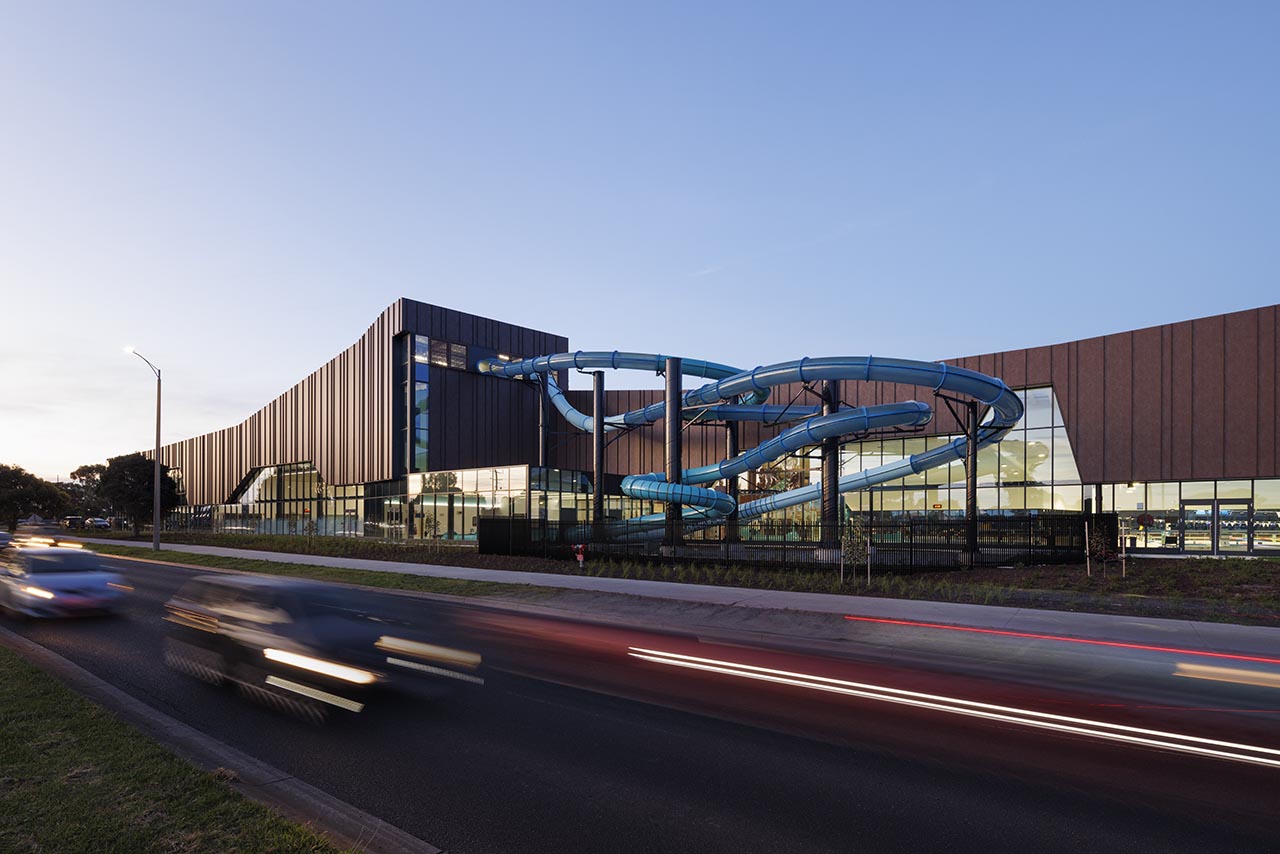
The facility’s success will help build a case for water-source heat pumps to be implemented in future projects.
Quick Facts
- Four-pipe heat pump (R513a)
Provides simultaneous pool, domestic water, space heating and cooling.
- Integrated water-to-water heat recovery system
Provides whole-of-facility heating for all spaces including pools and showers.
- 88,000L thermal energy storage (TES)
Used to load shift energy generated by the solar PV system.
- 500kW onsite rooftop solar PV array
- High–quality thermal building envelope
- Residual electricity sourced from 100 per cent renewable energy contract.
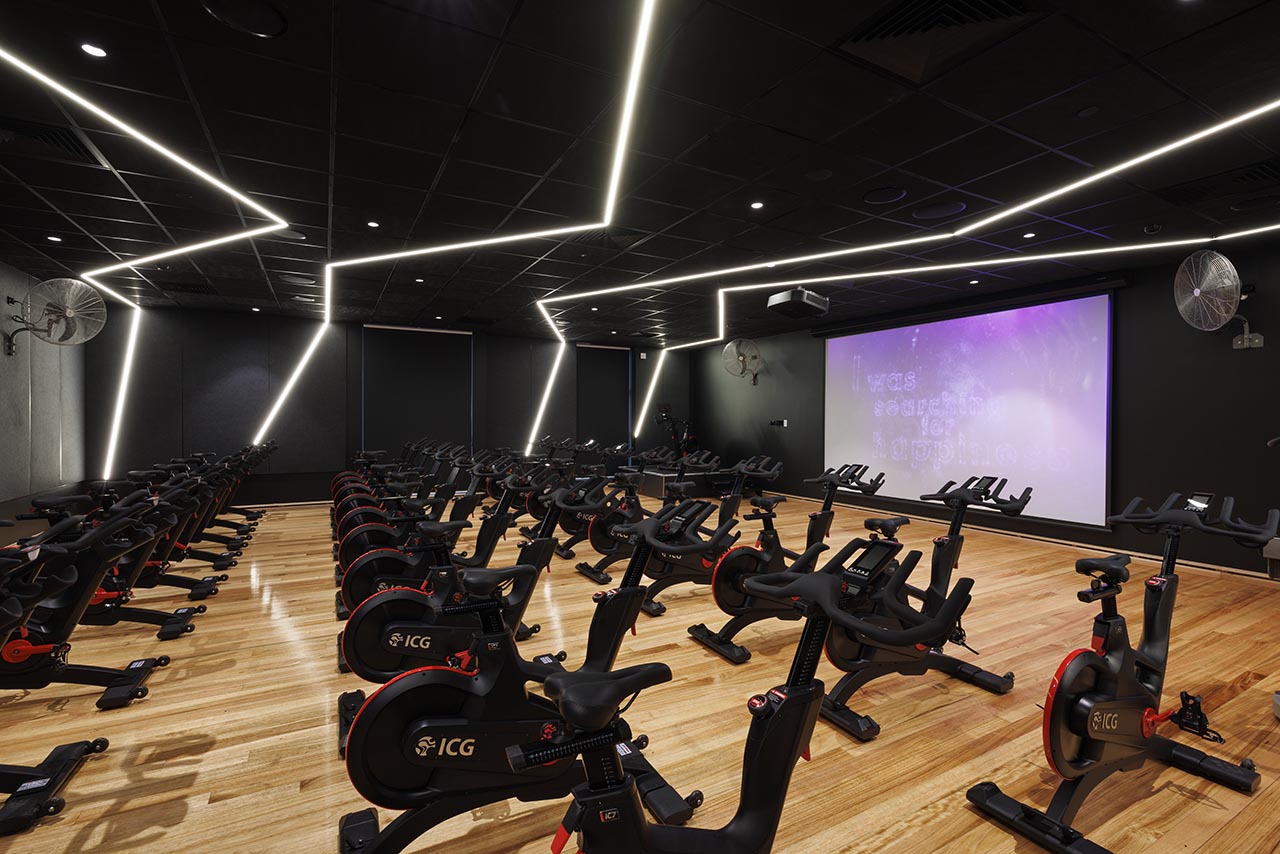
The all-electric facility runs off 100 per cent renewable energy.
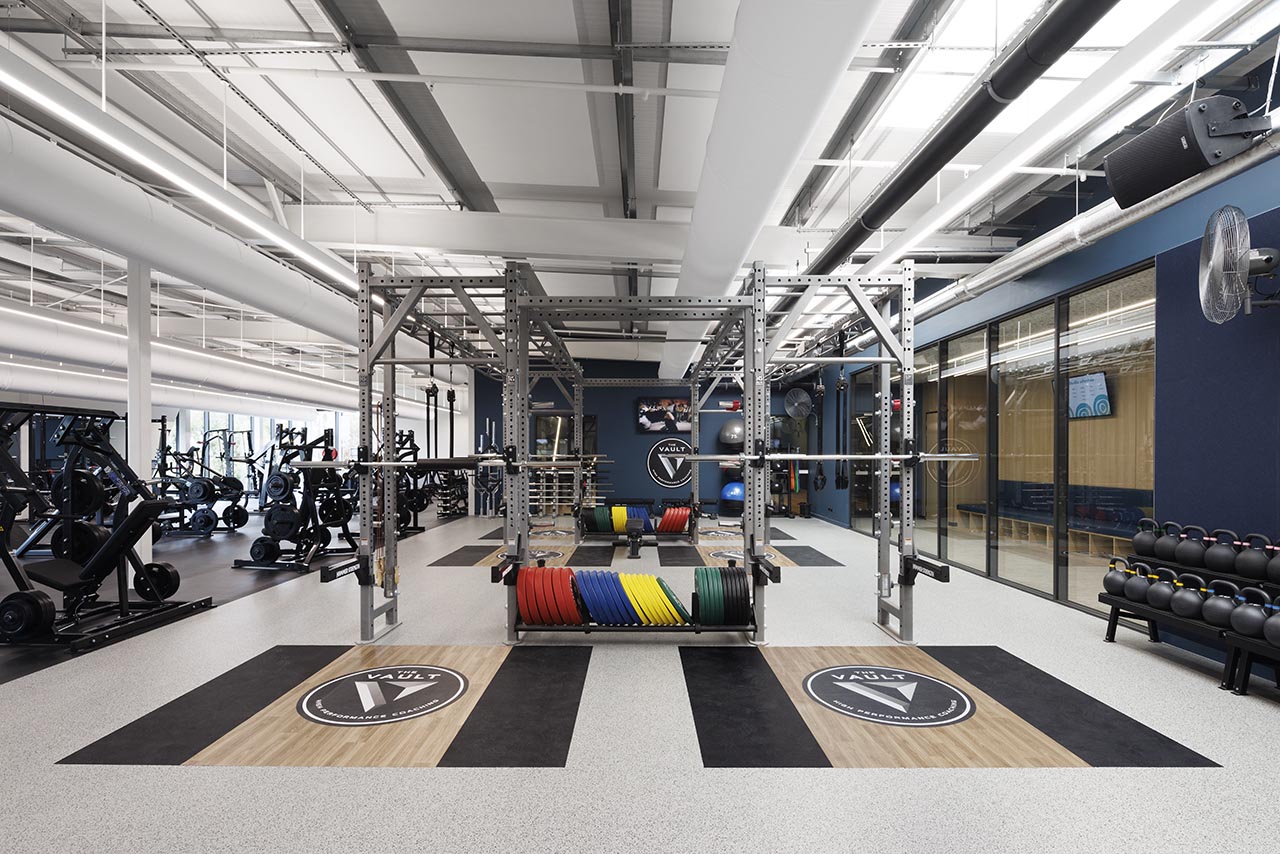
Water-to-water heat recovery provides whole-of-facility heating.
“Leisure and aquatic centres have traditionally been some of the most energy-intensive buildings for local councils to manage”
LCAs and HFOs, COP and GWP
The project’s initial concept design suggested that the four-pipe heat pump system would operate on low-charge ammonia (LCA). However, the use of a hydrofluro-olefin (HFO) refrigerant system was also assessed during feasibility studies.
Both systems were seen as being capable of providing the facility’s year-round heating and cooling requirements, with gas boilers not required for redundancy.
The assessment took into account the COP (coefficient of performance) of each system, as well as the refrigerants’ global warming potential (GWP).
Although it was noted that the four-pipe system was expected to result in higher annual power consumption, a capital cost comparison revealed significant savings associated with the adoption of an HFO system for this project.
With the lower capital cost and the HFO system’s ability to sufficiently meet the project’s overarching objectives of an all-electric, aquatic centre that runs off 100 per cent renewable energy, the HFO system was consequently adopted during the procurement process.
The project’s feasibility analysis also identified thermal energy storage (TES) as an effective complementary technology for the centralised, all-electric heat pump heating and cooling system.
With further energy modelling completed, the incorporation of a 100KL TES system would enable a reduction in the heat pump’s peak heating output requirement, leading to a significant reduction in heat pump capital costs.
Analysis also showed that by load-shifting to daylight hours during periods of excess solar PV generation, operation of the heat pump system could be optimised. In this way, the system’s average COP was increased.
On this basis, the design brief for the design variation-costing process nominated a TES volume of 100KL but was non-prescriptive as to whether this be installed above or underground. In response, the builder proposed an above-ground solution with a volume of 88KL.
The cost of the TES system was in fact double that of background cost estimates. Yet Brimbank decided to proceed with the approach based on its commitment to demonstrate the energy productivity and renewable energy benefits of integrating heat pumps with solar PV and TES.
Based on the final heat pump costs, the TES enabled a reduction in heat pump capacity from 1700kW to 1200kW. This added operational savings of up to $15,000 per year, which is deemed sufficient to provide a return on investment in due course.
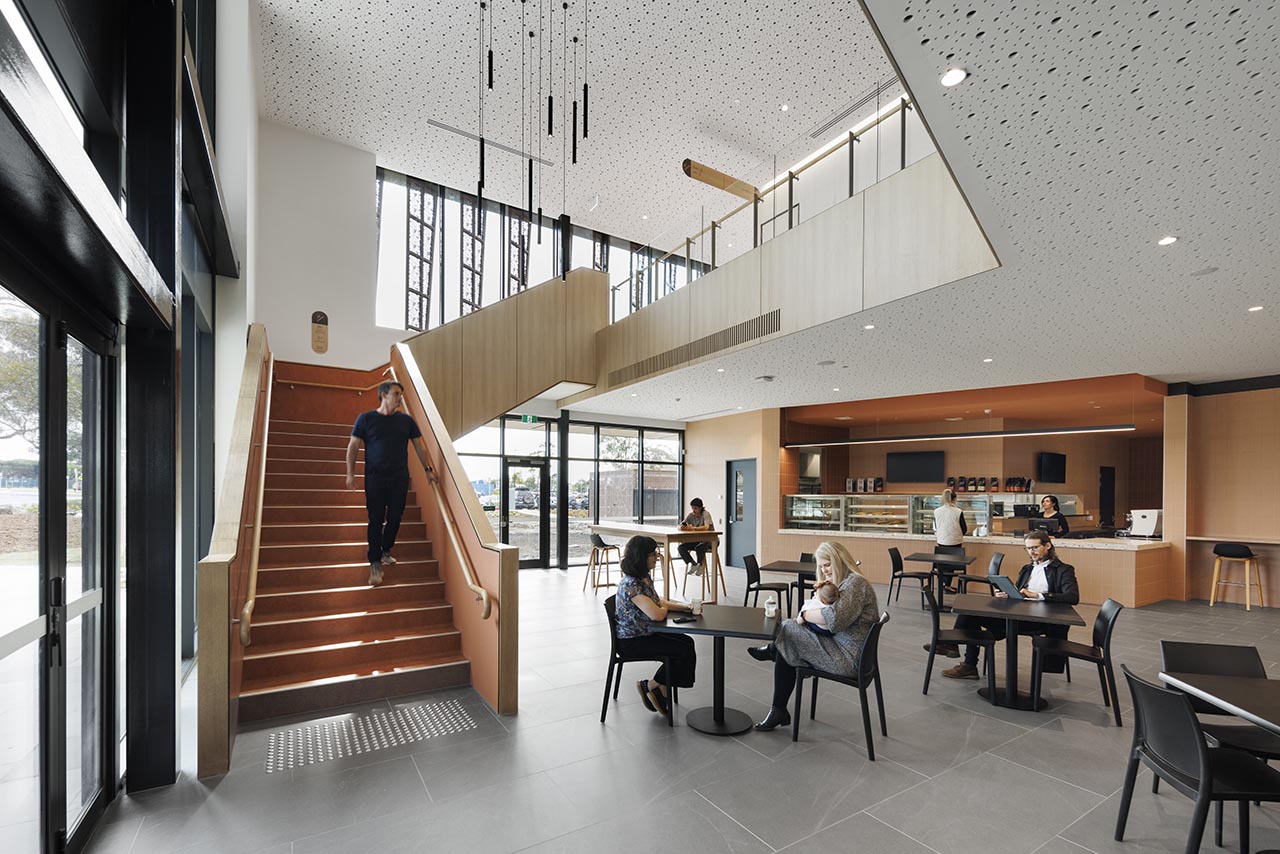
Operation of the heat pump system has been optimised by load-shifting to daylight hours during periods of excess solar PV generation.
Aquatics and wellness
Construction of the Brimbank Aquatic and Wellness Centre reached completion in August 2022, with the facility opening to the community soon after.
Reflecting its ambitions to cater for the needs of the wider community, the centre has been designed as a “regional” facility. This designation means that as well as offering a 10-lane indoor 50m pool with 500-seat grandstand, a dedicated learn-to-swim pool, and a warm- water exercise pool with accessible spa, the facility also features a leisure space. This comprises a leisure pool, a zero-depth water play unit and two water slides.
Beyond the pools, the centre also includes a two-level, 24/7 gymnasium and group fitness room as well as Cycle, Pilates and Mind and Body studios. A Wellness Centre for allied health services includes six treatment rooms.
A café, crèche, student lounge and a variety of communal, meeting, training and sensory rooms round out the facility.
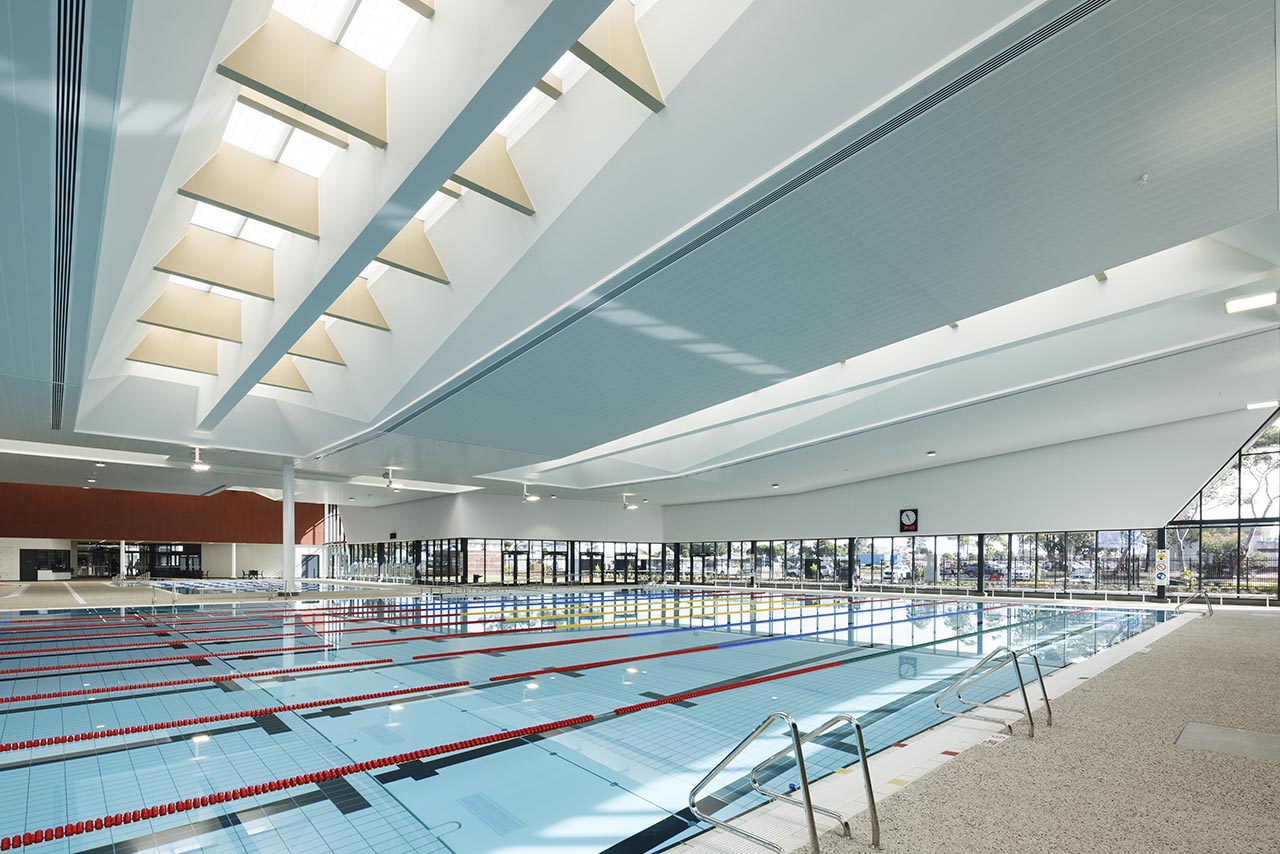
The facility includes 10-lane indoor 50m pool, a dedicated learn-to-swim pool, and a warm-water exercise pool with spa.
Energy Collaborative
In line with the project’s target of securing all residual electricity from a renewable power purchasing agreement, Brimbank City Council signed on to the Victorian Energy Collaboration (VECO) with 50 other councils in the state.
Pooling their electricity needs into one long-term contract provides the councils with 100 per cent renewable grid electricity generated from Victorian wind farms. This energy is now used to power all council-owned infrastructure, including the Brimbank Aquatic and Wellness Centre.
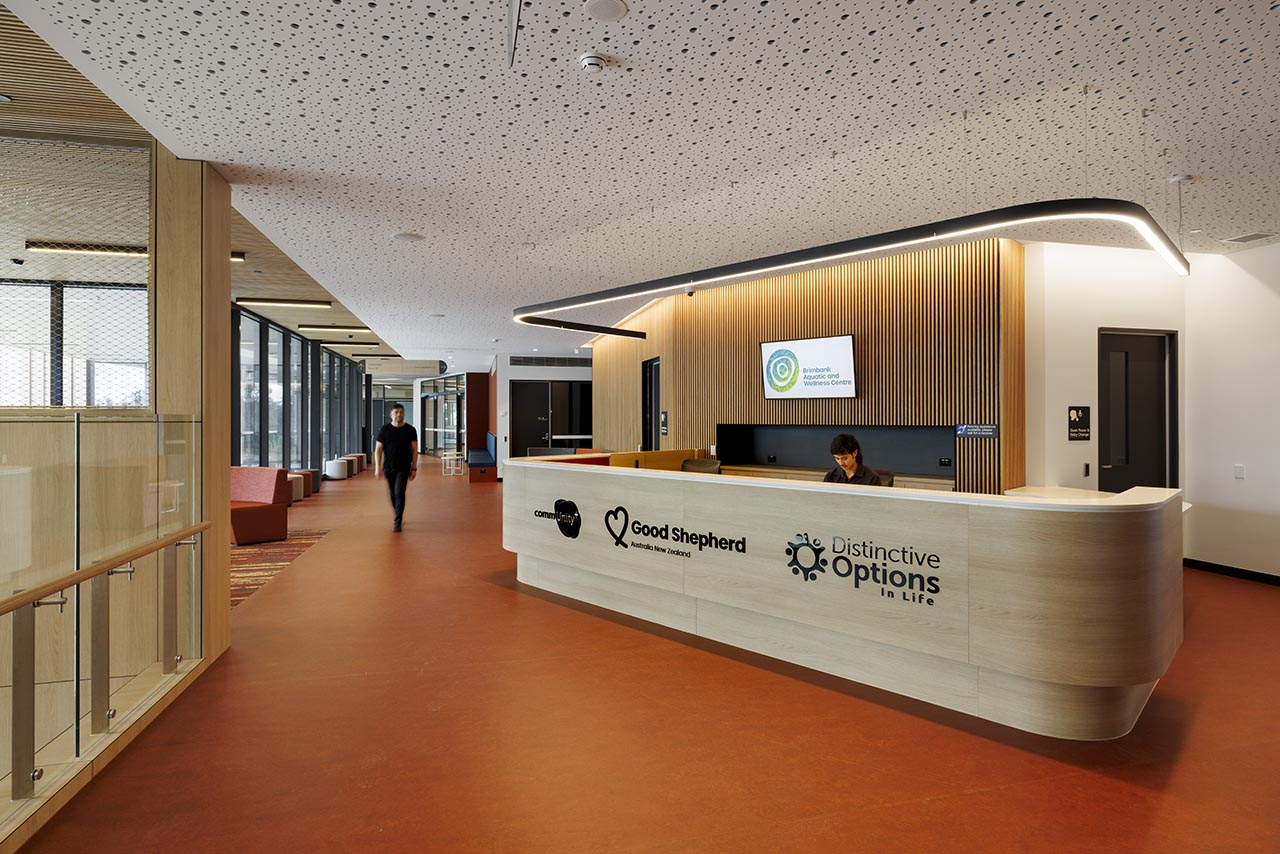
The Wellness Centre includes six treatment rooms.
Learning Lessons
The all-electric design of the new Brimbank Aquatic and Wellness Centre provides the opportunity to share knowledge across multiple industries. This is particularly pertinent given the hundreds of aquatic centres operating across the country.
The Brimbank City Council: St Albans Leisure Centre – Carbon Neutral Aquatic Centre Deployment Lessons Learnt Report 1 published on the ARENA website outlines the following implications for future projects:
Low-charge ammonia (LCA) heat pumps
Based on the cost insights and experience from this project, future projects are encouraged to prioritise an all-electric, design utilising natural refrigerant from the outset. Early prioritisation would stand to achieve a more cost-competitive outcome for LCA heat pump technology; however, the capital premium will need to be reduced considerably before the technology can be considered competitive with HFO on purely financial grounds.
Based on LCA technology’s superior energy and environmental performance, future aquatic centre project’s seeking to achieve an all-electric outcome should continue to consider LCA heat pump options, alongside HFO options, as part of their design and procurement strategy.
Thermal energy storage (TES)
Optimisation of TES design and costs will be an important area of innovation and focus on future projects, given the capital and operational cost benefits that its integration into all-electric aquatic centre designs can achieve.
From its experience on this project, the council believes that the cost-effectiveness of TES can be considerably improved for future projects. As long as the TES implementation costs do not exceed the correlating heat pump cost reductions, then a net capital cost benefit can be achieved.
Consideration of underground concrete tank solutions early in the design and procurement process is likely the best way to achieve this.
Cost-effective TES will allow consideration of even larger TES volume and capacity than what was included in this project.
Larger TES capacity could potentially facilitate even greater reductions in heat pump peak heating output requirements, resulting in significant capital cost reductions. By including sufficient excess of solar PV generation to charge these larger volumes of TES, operational costs and grid reliance can also be reduced further.
Future projects are encouraged to undertake solar PV and TES sizing analysis much earlier in the design process, and in more depth, with a focus on maximising the benefits of incorporating solar PV and TES with heat pumps.
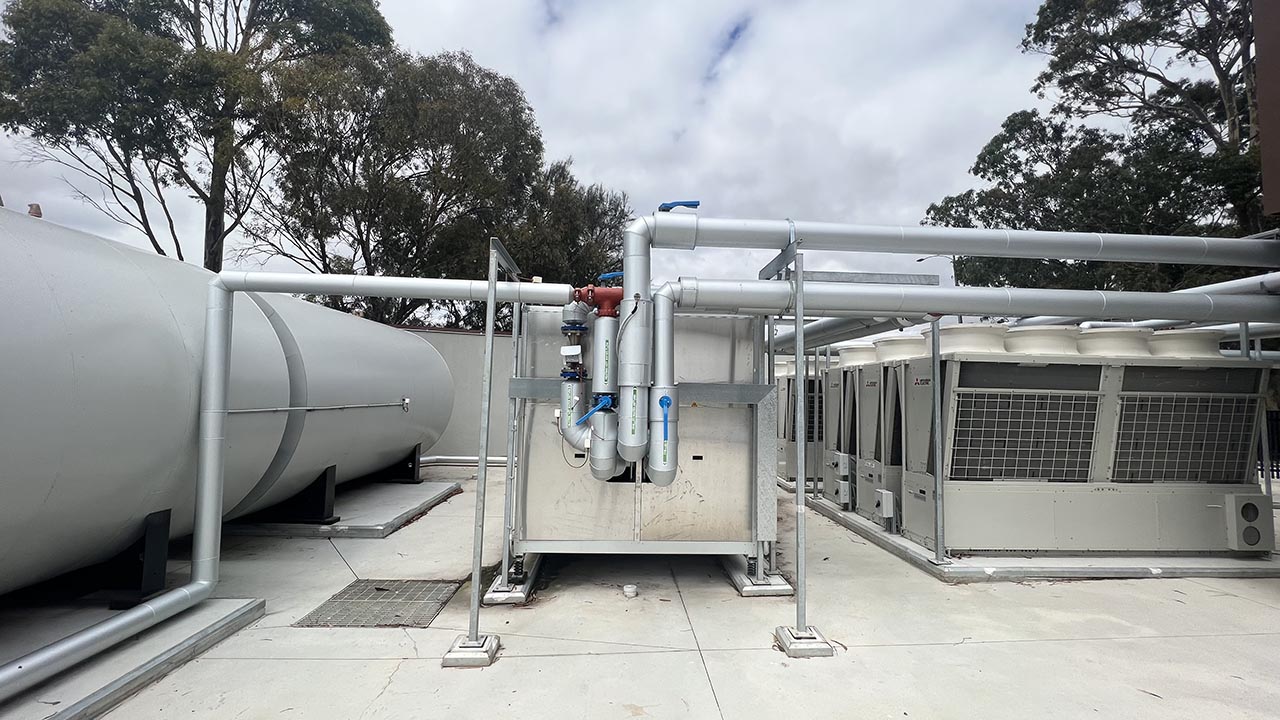
The thermal energy storage tanks and cooling towers.
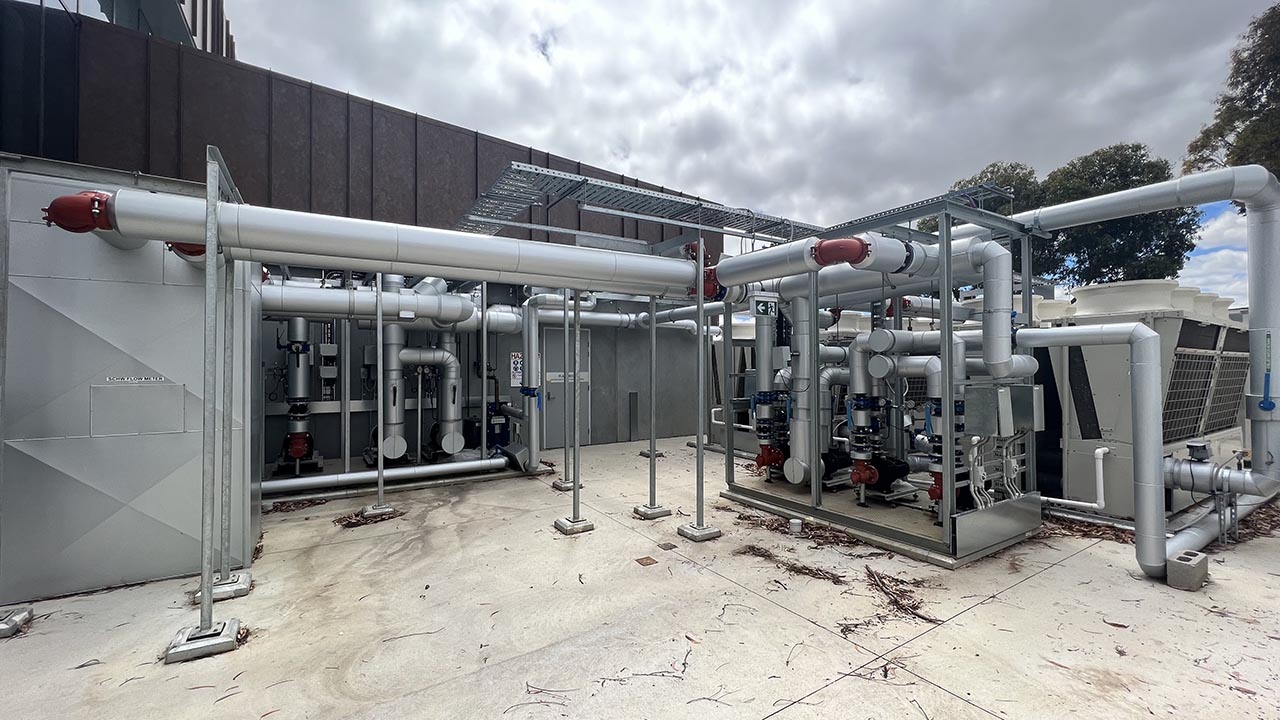
The thermal energy storage enabled a reduction in heat pump capacity from 1,700kW to 1,200kW.
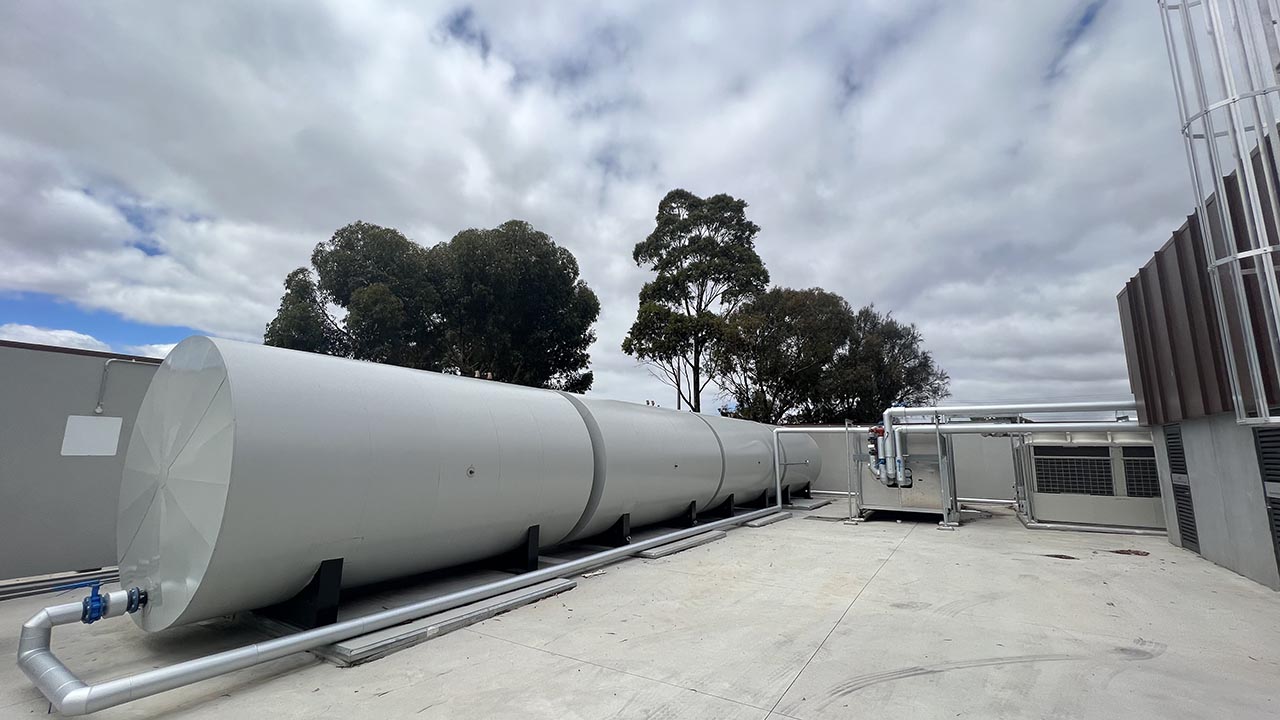
Implementation of underground tanks would have increased capacity and cost-effectiveness of thermal energy storage, a lesson for future projects.
Australian First
In May 2022, the Brimbank Aquatic and Wellness Centre was recognised for its world-leading sustainable design by the Green Building Council of Australia (GBCA), with a 6 star Green Star Design certification earned.
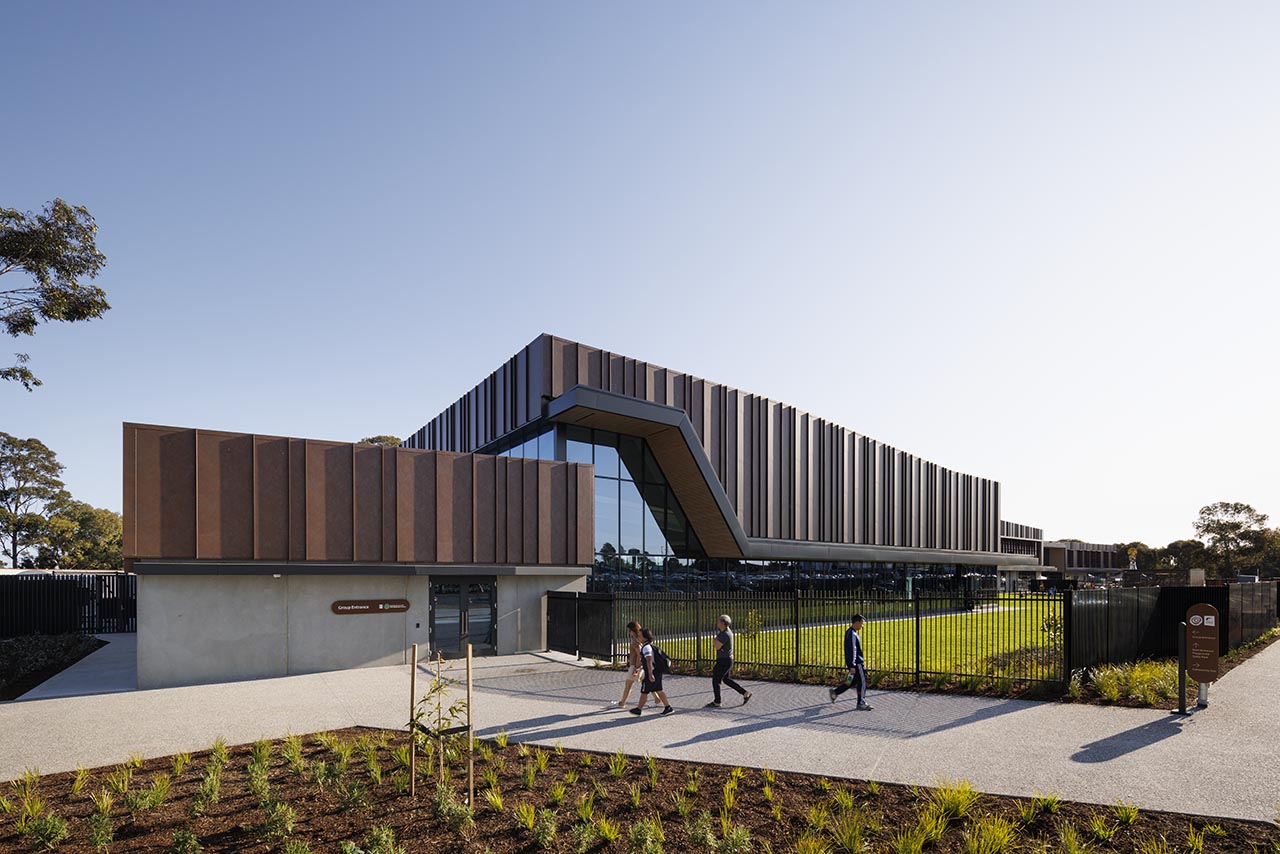
A café, creche, student lounge, and a variety of communal, meeting, training, and sensory rooms round out the facility.
Brimbank’s shiny new facility is the first indoor aquatic centre in Australia to achieve this feat.
This rating has been franked by Brimbank Aquatic and Wellness Centre’s preliminary operational performance, which shows a 76 per cent energy use improvement against Victorian aquatic centre benchmarks.
Compared to a business-as-usual design utilising gas, the centre is modelled to avoid 1,192 tonnes of emissions per year, delivering a 17 per cent reduction of the council’s overall annual emissions.
“Furthermore, due to its high-quality thermal building envelope and integrated system, the centre is estimated to function as 52 per cent more efficient than a typical Victorian centre that has switched to heat pumps alone,” says Michelle van Gerrevink, Brimbank City Council’s manager climate emergency and environment.
Modelling estimates suggest that by being all-electric, the design saved the council more than $353,000 in the 10 months of operation to date. More than $2,122,000 is expected to be saved over the first five years of operation if current gas price trends continue.
“The Brimbank Aquatic and Wellness Centre is a significant and industry-changing facility that clearly demonstrates it is possible to move away from the standard industry practice of replacing old and tired gas-fuelled leisure centres with new gas-fuelled leisure centres,” says Lancashire.
The Council says this project demonstrates the success of a Collective Impact Model, which involves aligned tenant partners in the building design.
“While this is great news for Brimbank,” Lancashire say, “the sharing of highly transferable key learnings is the key to extending the many benefits (realised in this project) Australia wide.”
Since opening, a number of other councils, consultants and industry bodies have toured the centre, with key lessons shared to allow future projects to follow in Brimbank’s footsteps.
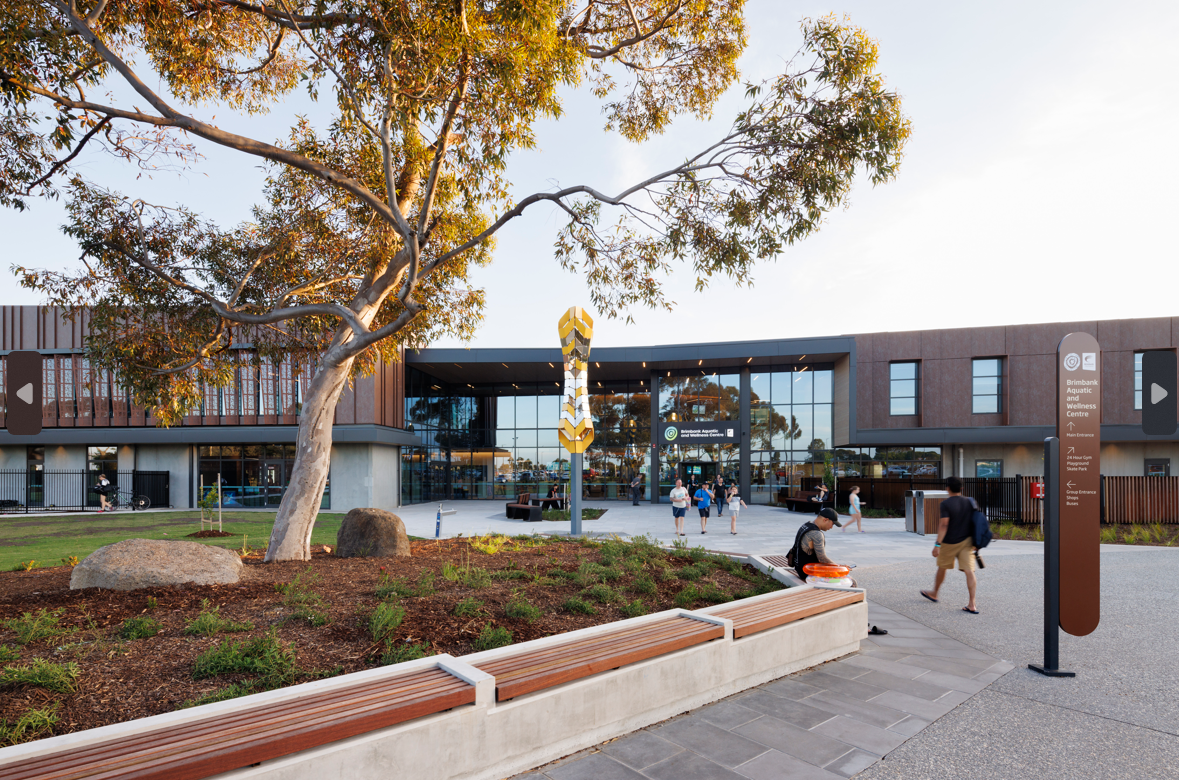
It’s estimated the all-electric design saved the council $350,000 in the the centre’s first 10 months of operation.
LIKE TO KNOW MORE
More lessons learned and knowledge sharing is available via www.arena.gov.au
Project at a glance
The Personal
Architect: William Ross Architects
Builder: ADCO
Client: Brimbank City Council
Consulting engineers (building services): BRT Consulting Engineer
ESD and sustainability Consultant: Thorsten Padeffke, LCI
Fire engineer: JP Fire
The Equipment
Four-pipe heat pumps: Climaveneta
Two-pipe heating only heat pumps: Mitsubishi Electric
Two-pipe reverse cycle heat pumps: Mitsubishi Electric
